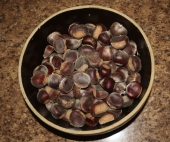


r ranson wrote:I've worn Pattens quite a bit and it looks like this style of clog is modelled after them. here's the wiki about them
In modrrn Japan, women and men wearing Kimono in inclement weather wear a protective plastic oversoe on their footwear. Here's photos and a brief description of each style. May it give you inspiration.
https://livejapan.com/en/article-a0000942/#:~:text=Geta,with%20synthetic%20materials%20as%20well.
I'll look for thr modern plastic overshoe later today and post. I understand you want to use natural materials, but many of these shoes have stood the test of time and are still sold and worn today.
Ah HAH! Here are some examples of thr "rainy day" overshoes worn over Zori. BTW, The workman's boots shown in the original link are the footwear of choice for all mondern-day construction workers. https://www.google.com/search?q=Zori+Cover&client
I know this is just for inspiration but I think it's interesting that at least In some cultures in modern day concept of wooden shoes and straw shoes and other shoes made of natural Fabrics is still alive and working quite well. Best of luck with your project.


Re' Burton wrote:Paul, I love the card! ...What, why, how, when. Maybe that only makes sense to me. I'd like the card to be able to stand alone, so if the reader has no knowledge of what a "rocket" is, maybe add rocket stove/heater/chamber or describe it or show sticks going into the fire box, or something? Very cool idea and graphics though! ... Thanks!

Christopher Weeks wrote:My experience with chestnuts is that when you sprout them in the fridge over the winter and then plant them in your nursery bed, they're the most bestest favorite squirrel food ever and one squirrel can easily eat 100 in one day. But that's probably not how you should eat them.

Barbara Manning wrote:
Tereza Okava wrote:
The other thing I always do is take the last one, when it's finally soft and perfectly ripe and could be eaten with a spoon, and throw it in the freezer. On the first hot day, I take it out, let it defrost, and eat it with a spoon, a wonderful, squishy frozen treat from the fall.
Also, you can make sherbet with them. Peel and freeze them, then put them in a blender or other kind of blitzer. Add honey or this honey-based spice sauce. The sauce is also good as a topping for vanilla ice cream. My Greek friend developed this recipe for his baklava, but I've rarely gotten past making the syrup. It's great on pancakes, too.
2 cups honey
2 cups water
2 cups sugar
2 cinnamon sticks
1 teaspoon grated orange peel
1 teaspoon vanilla
1\4 teaspoon ground cloves
Combine all the ingredients for the syrup in a saucepan. Bring it to a boil (watch it carefully so it doesn't boil over -- it's a hot mess to clean up!) and then simmer for 10 minutes. Strain, or not as you prefer, then cool. It keeps forever in the 'fridge as long as you use a clean spoon in it, and is a really tasty sauce. I also freeze blueberries and whiz them with the sauce in a blender for blueberry sherbet. I suspect almost any kind of frozen fruit will work.


Jeff Marchand wrote:I'd take them in a heart beat but I'm a little far.